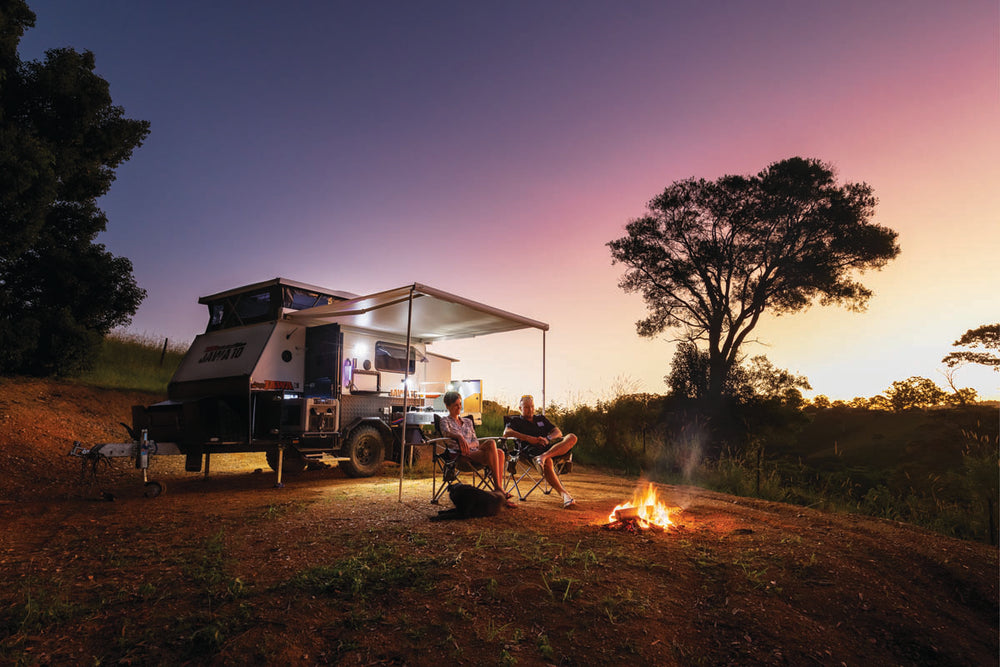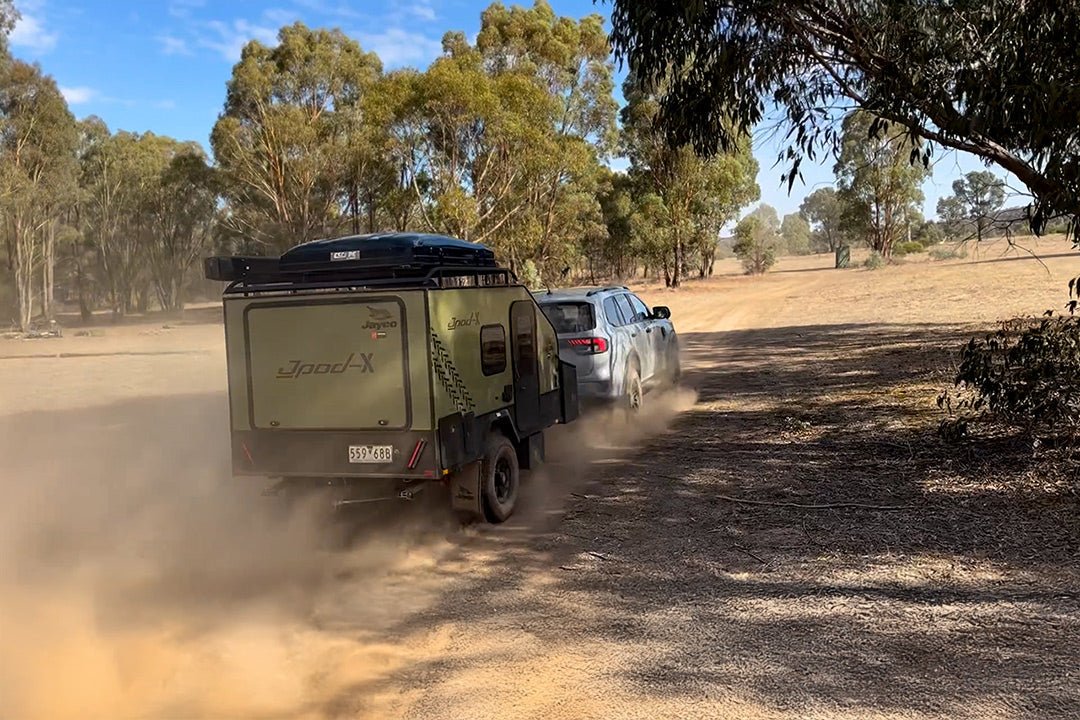Feature: Shoulder Season Travel

There’s more to shoulder season travel than just saving a few pennies: experienced travellers say it’s the best time to go. You’ll discover attractions without the crowds, and have the full attention of tour operators and park owners.
Work commitments and a failure to understand weather patterns are two common reasons as to why people travel in the high season. So, if time is on your side, then that leaves ignorance, which is a lousy excuse.
Some of Australia’s favourite destinations are incredibly busy in the high season. If you’ve ever waited in a queue outside a tourist park at 8am in the morning, then this is for you.
WEATHER OR NOT
The first rule to shoulder season travel is to understand the climate that you intend to travel in. Your first port of call is the Bureau of Meteorology (BOM) website. Historical data for most of Australia’s top touring destinations is stored on the site, and can be accessed here.
“You can see the extreme maximum and minimum temperature (of your chosen destination) and even monthly rainfall, for various places,” explains Doctor Harvey Stern, Climate Meteorologist for Victoria.
“The inland areas have bigger (weather) fluctuations (from year to year). In most of coastal regions the rainfall is reliable. The inland can vary dramatically.”
The BOM also publishes three-month forecasts
of regions Australia-wide, which are great for planning your trip; they’re updated once a month. For day to day planning, temperature reports to the minute are available too.
NORTH-EAST COAST
At season’s peak, from November to late January, tourists devour Qld’s south-east coast with a locust-like ferocity. Its sub-tropical climate, however, produces an average of 300 days of sunshine in a year, so for grey nomads, one sumo-sized, schoolie-proof shoulder of a season is the happy result. April tends to enjoy maximum temperatures of about 26ºC, which would suit those hailing from the south.
If you want something balmier, aim higher, as the further north you go the more tropical it gets. The shift is most significant as you pass over the Tropic of Capricorn, onto areas like Mackay.
April is a great time to explore Qld’s Far North coast away from the crowds, as it usually (but not always) marks the end of the wet season. Even in Cape York, most tracks should be starting to clear – not that there are many – and the trade winds are low.
This season, however, the Bureau of Meteorology predicts a warmer season through some parts of Qld’s Far North, while the south is expected to be a bit wetter than usual.
The NSW coast is delightful year-round but in the shoulder season you are more likely to find the accommodation you want.
AUTUMN WONDERS
Right now, Vic’s Beechworth, Myrtleford and Bright (at the foothills of the Alps) are erupting in a mass of dramatic autumn hues. Closer to Melbourne, you’ll find similar displays at Mount Macedon and the pleasant Dandenong Ranges. NSW’s historic region of Bathurst, where the colonial European influence is strong, also puts on a great autumn show.
If you’re willing to don a poncho and long johns, Tassie offers the most spectacular autumn colours in the country, while its dense rainforests are shod in a fine mist coat. Best of all, after a day’s touring or hiking, you can warm up to hot soup and cosy fire in a delightful log cabin. The Alps and Snowies offer similar pleasures, but hurry, as the touring window between the summer peak and ski season is slim.
South-west WA is a year-round destination, but be sure to pack the Dryzabone and a sweater or two in case you’re confronted with a cold front.
The Murray is a year-round destination as well, and right now, the north-west of Vic is looking its best. Places such as Mildura are starting to get busy though, as the peak tourist season fast approaches.
“(Late March) we are at a park on Lake Mulwala, between Yarrawonga and Corowa, and we are the only caravanners here,” says CW correspondent, Tony Allsop. “It’s very pleasant. The weather is good and the fishing is great.
“Those who travel in the shoulder season are more likely to get a decent fishing spot,” he adds. “And the people here (Lake Mulwala) have been pulling in some huge Murray cod.”
OUTBACK
Many tourists avoid travelling to the outback outside of peak season for fear of weather extremes. That’s fair enough, but in places such as the Red Centre around Alice Springs or the Pilbara in WA, the worst of the summer heat is subsiding and the tourist season is starting to build up. So to avoid the crowds, go now.
“In the centre, in the winter it’s freezing cold at night,” says Tony Allsop. “It gets as low as -6ºC, but in the shoulder season (April-May) it’s not too bad. It’s a bit warmer during the day, though.”
So best to plan your physical activities for the morning, and retire for a lengthy happy hour when the midday heat kicks in. Further south in SA’s Flinders Ranges, the weather is a little cooler, with warm to mild days and temperate nights.
HOT AND WET
In places such as the Kimberley, Darwin and Kakadu, the rainy season is drawing to a close. Expect that some tracks will still be closed and the river crossings deep, but water features such as rapids and waterfalls are at their most spectacular and the fishing is rewarding.
Bill Pycroft, CEO of Top Tourist Parks, says that during the season peak (June, July and August), accommodation in these regions is in high demand. But many of the caravan parks are almost empty for the rest of the year.
“Every park owner is happy to build onto the shoulder period; it’s a matter of trying to change people’s perception,” says Bill.
He says that park operators are better placed to serve your needs in the shoulder season. RVers travelling with pets, for example, will notice that park owners are more eager to accommodate their furry friends. You’ll also get your pick of the best sites or cabins – and usually at a discount.
Tony Allsop notes that tours, such as one he took that was run by the El Questro resort in the Kimberley, are often completely booked out in during the peak season, “but they do run through the shoulder, too.” Another tour he mentions, the Timeless Land Three Gorge Cruise in Nitmiluk NP (Katherine Gorge), is also at its best in the shoulder, as there’s still plenty of water in the different gorge sections and not as many people.
FINDING SHOULDER SEASON BARGAINS
When you are looking for accommodation, standard prices in the shoulder season are typically between 20 to 30 per cent lower than peak rates. But that doesn’t mean that further discounts during this time can’t be found. Below are great links for finding cost-effective accommodation:







